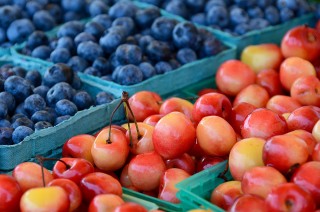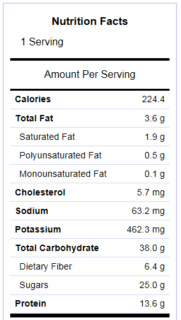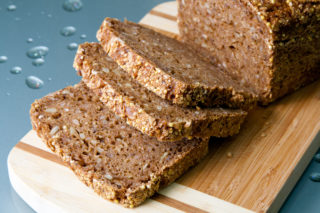By Rebecca Mason, RDN
According to the USDA, American adults are making better food choices and are showing an improvement in overall dietary quality. But try as we might to make the best choices possible, it’s easy to be misled when seemingly healthy foods are anything but.
Here are five commonly misunderstood foods to keep an eye on:
- Organic foods
Let’s define “organic.” In order for a food to be labeled organic, it must meet rigorous standards for production and processing. According to the Organic Trade Association, organic products must be grown and processed “without the use of toxic and synthetic pesticides and fertilizers, genetic engineering, antibiotics, synthetic growth hormones, artificial flavors, colors, preservatives, sewage sludge and irradiation.” For us, this means less exposure to pesticides, reduced greenhouse emissions and increased nutrients. But, an organic stamp is not a free pass. Keep in mind that an organic cookie is still a cookie; organic chips are still chips; and organic coffee creamer is still creamer. So, enjoy them, but do so mindfully, and in moderation.

- Bottled smoothies
Bottled smoothies serve as a quick breakfast and appear to be a perfect way to get several servings of much-needed fruits and veggies in your diet. Unfortunately, many commercial products contain an entire meal’s worth of carbohydrates and very little protein, a combination unlikely to promote satiety and stable blood sugar levels. You can cut the sugar by 35% and pump up the protein by making your smoothie at home. The trick to cutting sugar? Blend your smoothie with water instead of fruit juice.
Banana Berry Smoothie
- ½ ripe banana
- 1 cup frozen berries
- 1 cup spinach
- ½ cup low fat plain Greek yogurt
Blend all ingredients, adding water and ice to achieve desired consistency.
225 calories, 4 grams fat, 38 grams carbohydrate, 14 grams protein.

- Fat-free products
Fat is the most calorically dense macronutrient, weighing in at nine calories per gram, versus four calories per gram for carbohydrates and fat. This makes fat-free versions of foods popular to those watching their waistlines and aiming to reduce their fat and calorie intake. However, in order to replace the mouthfeel and flavor of fat, food manufactures often add additional thickeners, sugar, sodium and flavor enhancers like MSG, to products. Take fat-free ranch, for example. Did you know there are 27 ingredients listed on the label? Rather than filling up on fillers, make your own dressing using quality ingredients at home.
- Turkey bacon
Bacon definitely has a bad rap. It starts out as high-fat pork belly, and becomes heavily processed to boost flavor. The result is crunchy, salty strips of meat with visible marbling. Unfortunately, it’s high in saturated fat and sodium, making turkey bacon a seemingly healthier alternative. But it’s made from mechanically separated turkey, sugar, oil, salt, flavorings, artificial colors and nitrates. So while it’s usually lower in fat and calories, it’s still considered a processed meat. While choosing turkey bacon may reduce your intake of saturated fat, the American Institute for Cancer Research reports that processed meats are associated with a higher risk for colorectal cancer. So, what is a person to do when they’re jonesing for a BLT or bacon with breakfast? Have a slice—but pair it with healthy options, like fruits, vegetables, lean protein and whole grains. Balance is key when it comes to bacon.
- Wheat bread
The trickiest food labels are found on wheat bread. We know that whole grains are good for our health, so it’s a no-brainer to grab a package of wheat bread and toss it in your shopping cart. However, just because the label says “multigrain,” “wheat” or “whole grain” doesn’t mean it’s a whole grain product. Confusing, right? Bread passes for multigrain by having several refined grain flours in it, and wheat bread passes for wheat bread by simply having refined wheat flour in it. Instead of choosing your bread based on the front of the package, try reading the ingredients on the back. Since they’re listed in predominance, you’ll want your first ingredient to be “whole grain” or “whole wheat,” not just “wheat flour.” If you spend a minute reading the ingredients, you’ll be eating better bread in no time.

When it comes to eating, the most important thing is that you are providing your body with nutrient-dense, protein-packed options. Try to stick with whole foods and keep the special treats to special times in moderation.
About the Author: Rebecca Mason, RDN, is a registered dietitian/nutritionist and product specialist in the Wellness Department at Priority Health. She is passionate about helping families and individuals improve their health through nutrition education and nutritious food access. Rebecca is certified in adult weight management, and has a background in both clinical nutrition and wellness programming.


